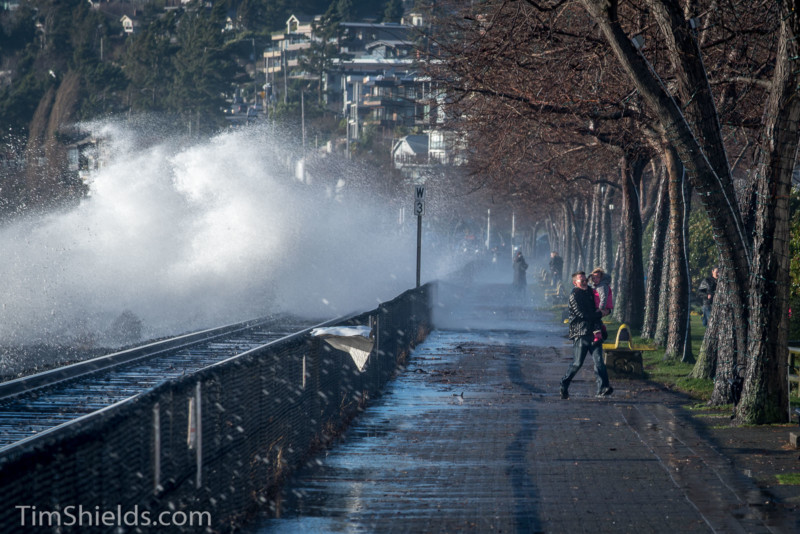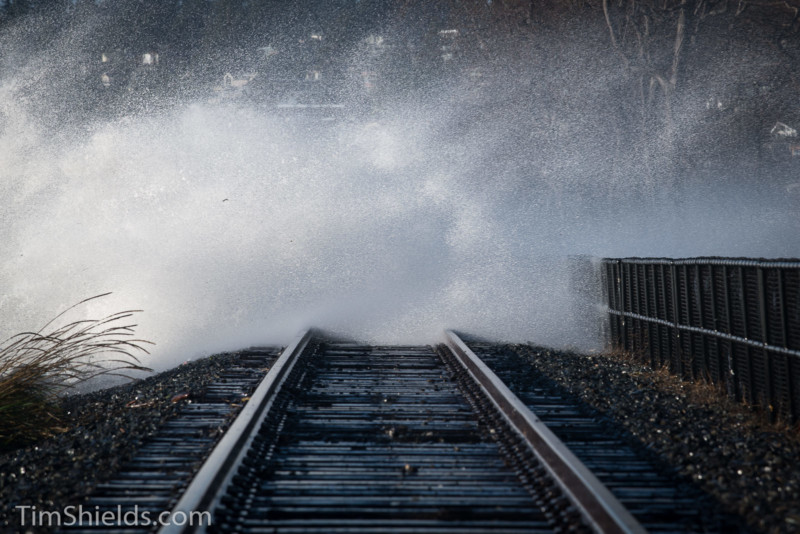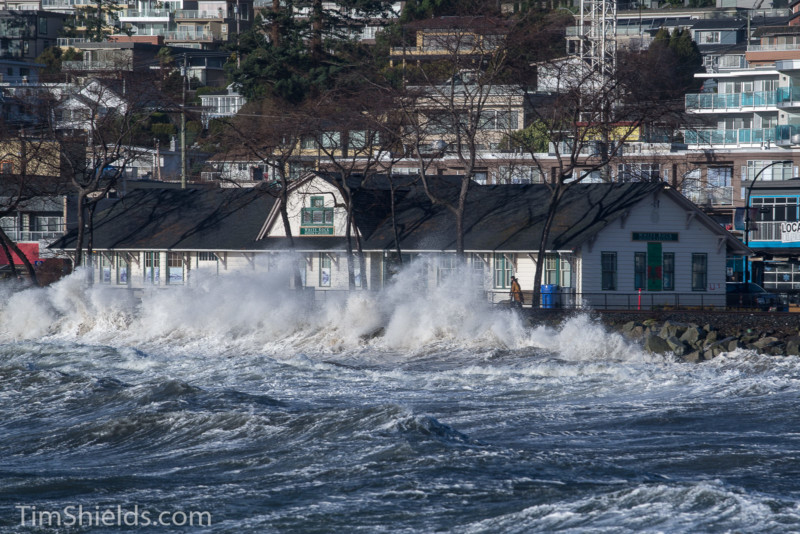How My Photo Walk Almost Turned Deadly During a Winter Storm
![]()
On December 20th, 2018, a winter storm in the City of White Rock, British Columbia, Canada, made for some dramatic photos and resulted in the helicopter rescue of one man. The event started out for me as a photo walk with my adult daughter.

Many people walked to the ocean shore to witness the weather event.
![]()

![]()
We walked out onto the pier, and there was no sense of danger at the time. The pier was busy with other people walking out to the end where there is a large rock breakwater that protects about 25 boats that are always moored there. The pier felt secure and there was no indication of what was to come. This pier has been the icon of White Rock for the past 100 years and it has withstood many storms stronger than this one.
![]()
The view from the pier allowed us to see The White Rock museum as it was covered in blowing water from crashing waves.

A dock with about 12 sailboats tied to it broke loose from its mooring at the end of the pier. The dock and sailboats were being blown in the direction of land. If you look closely, you can even see two light standards on the dock.
![]()
The moving dock and boats changed direction and headed towards the pier. This change in direction happened quickly. At this point, the pier was still stable and solid.
![]()
The boats struck the pier and almost immediately two masts came crashing down on the pier deck in a tangle of cables.
![]()
The masts and cables were flailing up and down in a dangerous mess. As soon as the boats came in contact with the pier, the pier deck began pitching and heaving. We had to make a decision, do we run towards land now and risk having a third mast fall on top of us, or do we wait?
![]()
We ran for it. There were five of us who ran through the fallen masts and tangled cables. It was a dramatic and scary moment in time. The pier deck broke up very quickly after we crossed over.
![]()
One man who had been alone at the very end of the pier was cut off from land. He can be seen in this photo standing alone. The pier has clearly been cut into two parts by the boats.
![]()
The damage caused by the boats was extensive. It seemed as if the boats themselves were crushed by the process and all but one of them disappeared. 12 boats down to just one. And the stranded man was still at the end of the pier.
![]()
A Canadian Armed Forces search and rescue helicopter was dispatched to the scene from Vancouver Island to rescue the stranded man.
![]()
A rescue diver was lowered down to the man, and they were both lifted to safety. The pier remains closed with no set date to fix it.
My takeaway as a photographer was all about risk assessment. During situations such as this, or even when crawling around at the top of a canyon or cliff, we photographers need to be conducting a continuous risk assessment. But the problem is that as people we are often not very good at doing two things well at the same time. You can either concentrate on taking good photos or concentrate on your risk assessment. It is very difficult to do both at the same time.
This applies to photography in a windstorm equally as much as it applies to photography while standing at the top of a canyon. Danger can sneak up on you slowly, or it can hit suddenly. In my situation, it was a bit of both. Although we cannot foresee every possible eventuality and outcome, we can however continually assess the level of risk we are in and be quick to move out of harm’s way.
About the author: Tim Shields is a photographer in fine art, a landscape photography coach, and an eCommerce entrepreneur from Vancouver, British Columbia, Canada. The opinions expressed in this article are solely those of the author. You can fin dmore of Shields’ work on his website, Flickr, Facebook, and Instagram. This article was also published here.